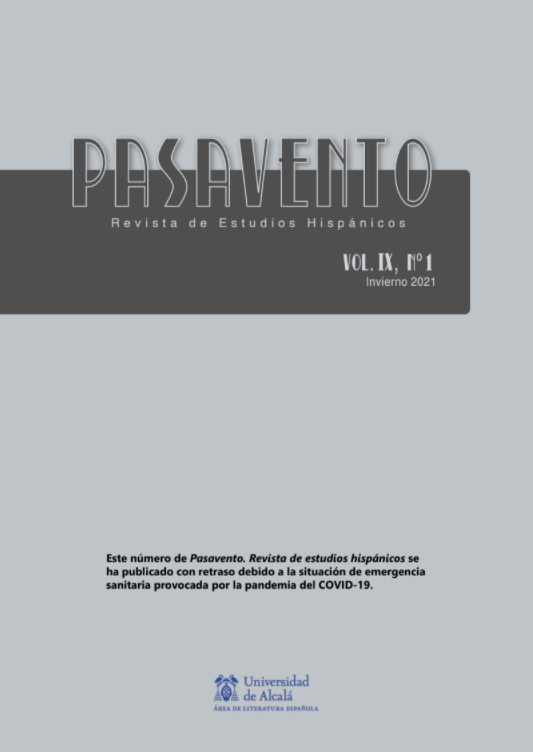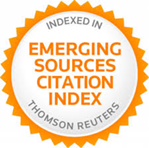A Reading of Catalonia's Capital: Urbanism, Violence and City as an Organism in "Barcelona trágica" by Andreu Martín
DOI:
https://doi.org/10.37536/preh.2021.9.1.1091Keywords:
Urban Space, Class Conflict, Violence, Damaged Identity, Andreu MartínAbstract
The novel Barcelona trágica (2009) by Andreu Martín depicts an episode of political uncertainty, a case of civil disobedience and occurrences of urban violence, historically known as “La Setmana Tràgica de Barcelona” (The Tragic Week of Barcelona), which unfolds in the summer of 1909. The present study investigates in depth the vision of the capital of Catalonia as a living and damaged organism in constant metamorphosis, which exposes an exhausting process of collision and social adjustment to emphasize the unfinished realization of personal and collective subjectivity. The article points out the existence of unstable and antagonistic historical links between the global urban space and the multiplicity of frontier spaces, used by the industrial bourgeoisie as marginalizing structures to disrupt and alienate the battered existence of the incipient anarchist proletariat. It also reflects on how the urban area in Martin’s narrative becomes a versatile barometer of public disturbances and class problems in order to reevaluate the citizen-society binomial. In this way, through the critical observation of the strategies of fiction, it is shown how the individual suffers from undeniable and harmful consequences due to the multiple negotiations and asymmetrical relations between Barcelona and its citizens, reflection of the harsh metropolitan environment resulting from the political and social crisis of 1909.
References
Aibar, Eduardo, y Wiebe E. Fijker, (1997). “Constructing a City: The Cerdà Plan for the Extension of Barcelona”, Science, Technology, and Human Values, 22.1: 3-30.
Arendt, Hannah (1970). On Violence. Nueva York: Harcourt Brace and Company.
Castells, Manuel (2005). La ciudad: Pensamiento crítico y teoría. Ciudad de México: Instituto Politécnico Nacional-Dirección de Publicaciones.
Castells, Manuel (2008). La cuestión urbana. Ciudad de México: Siglo XXI.
Cruz, Rafael (2005). “El órgano de la clase obrera. Los significados de movimiento obrero en la España del siglo xx” Historia Social, 53: 155-174.
Delgado, Manuel (2017). La ciudad mentirosa. Fraude y miseria del “modelo Barcelona”. Madrid: Catarata.
Delgado, Manuel (2007). Sociedades movedizas. Pasos hacia una antropología de las calles. Barcelona: Anagrama.
Epps, Brad (2002). “Space in Motion: Barcelona and the Stages of (In)visibility”, Arizona Journal of Hispanic Cultural Studies, 6: 193-204.
Fernández Valentí, Ricardo (2014). El tranvía 48. <https://eltranvia48.blogspot.com/2014/08/la-barriada-de-pekin-el-autentico.html> [última visita: 17 de marzo de 2020].
Fraser, Benjamin (2007). “Manuel Delgado’s Urban Anthropology: From Multidimensional Space to Interdisciplinary Spatial Theory”, Arizona Journal of Hispanic Cultural Studies, 11: 57-75.
Fraser, Benjamin (2009). “Narrating the Organic City: A Lefebvrian Approach to City Planning, the Novel, and Urban Theory in Spain”, Journal of Narrative Theory, 39.3:369-390.
Gabriel, Pere (1990). “Sindicalismo y sindicatos socialistas en Cataluña. La UGT, 1888-1938”, Historia Social, 8: 47-71.
García de Cortázar, Fernando (2004). “Las dudas de una nación” y “España sin llanto”, en Memoria de España, ed. Fernando García de Cortázar. Madrid: Aguilar, 480, 510- 511.
González Calleja, Eduardo (1994). “La razón de la fuerza: Una perspectiva de la violencia política en la España de la Restauración”, Ayer, 13: 85-113.
Harvey, David (2003). Espacios de esperanza. Madrid: Akal.
Lefebvre, Henri (1978). El derecho a la ciudad. Barcelona: Península.
Lefebvre, Henri (1979). Espacio y política. Barcelona: Península.
Lefebvre, Henri (1991). The Production of Space. Maiden: Blackwell Publishing.
Lefebvre, Henri (2003). The Urban Revolution. Minneapolis: University of Minnesota Press.
Martín, Andreu (2009). Barcelona trágica. Barcelona: Ediciones B.
Martín-Ramos, Ángel (2012). “The Cerdà effect on city modernisation”, The Town Planning Review, 83.6: 695-716.
Neuman, Michael (2011). “Ildefons Cerdà and the Future of Spatial Planning. The Network Urbanism of a City Planning Pioneer”, The Town Planning Review, 82.2: 117-143.
Ortega Valcárcel, José (2000). Los horizontes de la Geografía. Teoría de la Geografía. Barcelona: Ariel.
Palleres-Barbera, Montserrat, Anna Badia y Jordi Duch (2011). “Cerdà and Barcelona: The needs for a new city and service provision”, Urbani Izziv, 22.2: 122-136.
Rubí, Gemma (2011). “Protesta, desobediencia y violencia subversiva. La Semana Trágica de julio de 1909 en Cataluña”, Pasado y memoria. Revista de Historia Contemporánea, 10: 234-268.
Santos, Milton (1990). Por una geografía nueva. Madrid: Espasa-Calpe.
Suárez Cortina, Manuel (1998). “La Restauración (1875-1923)”, Aula-Historia Social, 1: 18-32.
Tuñón de Lara, Manuel (1972). El movimiento obrero en la historia de España. Madrid: Taurus.
Wells, Caragh (2001). “The City of Words: Eduardo Mendoza’s La ciudad de los prodigios”, The Modern Language Review, 96.3: 715-722.
Žižek, Slavoj (2008). Violence. Nueva York: Picador.
Downloads
Published
How to Cite
Issue
Section
License
Copyright (c) 2021 Pasavento. Revista de Estudios Hispánicos

This work is licensed under a Creative Commons Attribution 4.0 International License.








